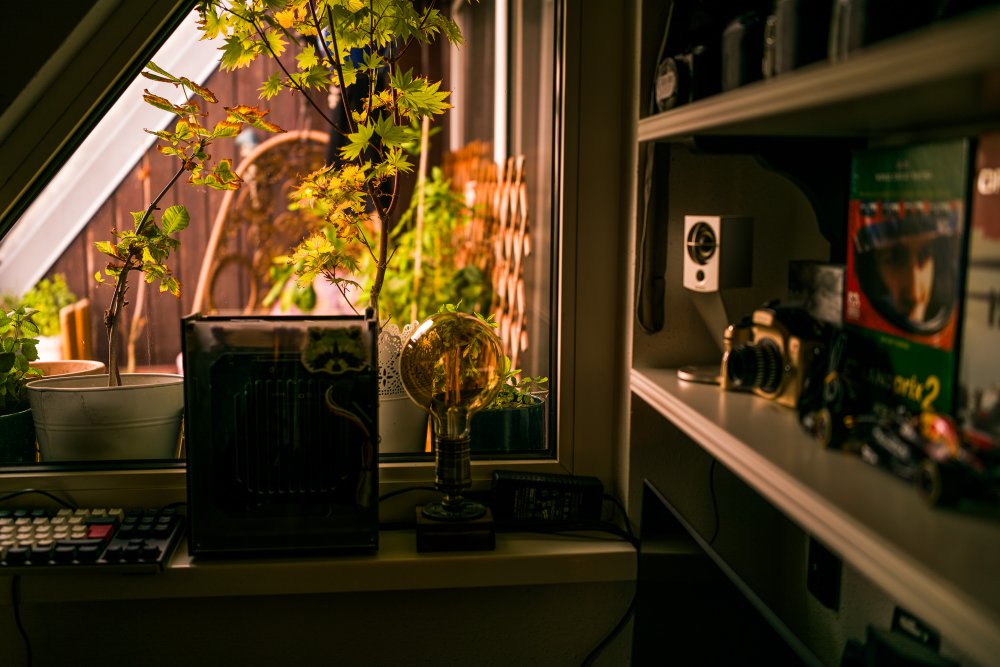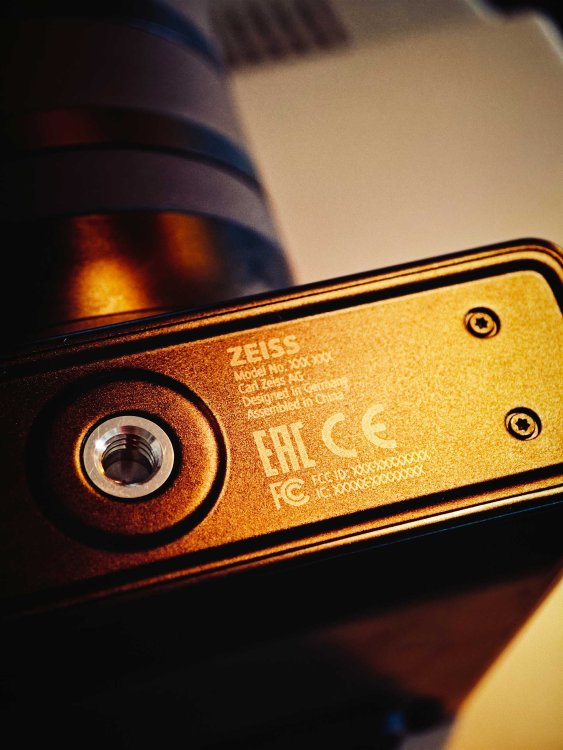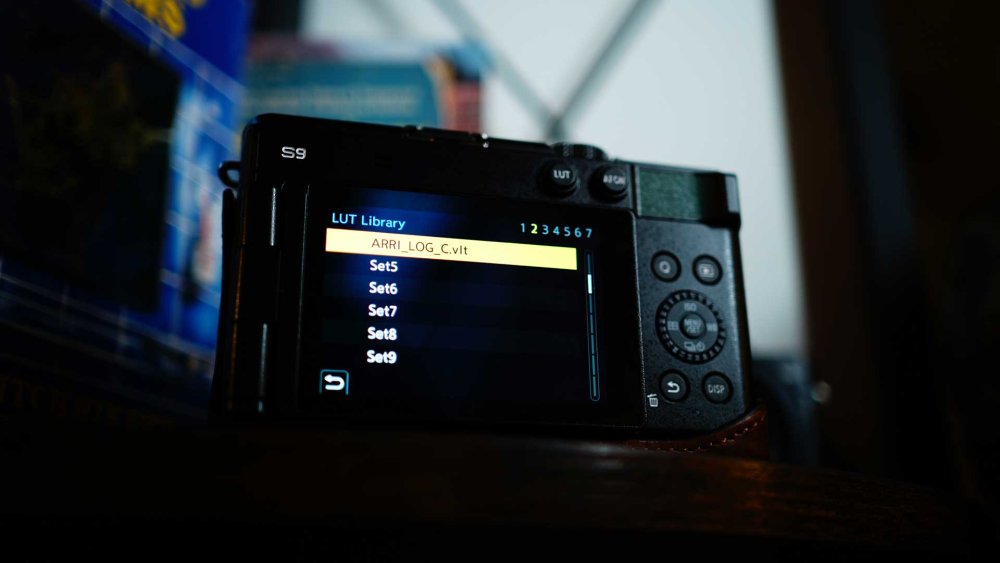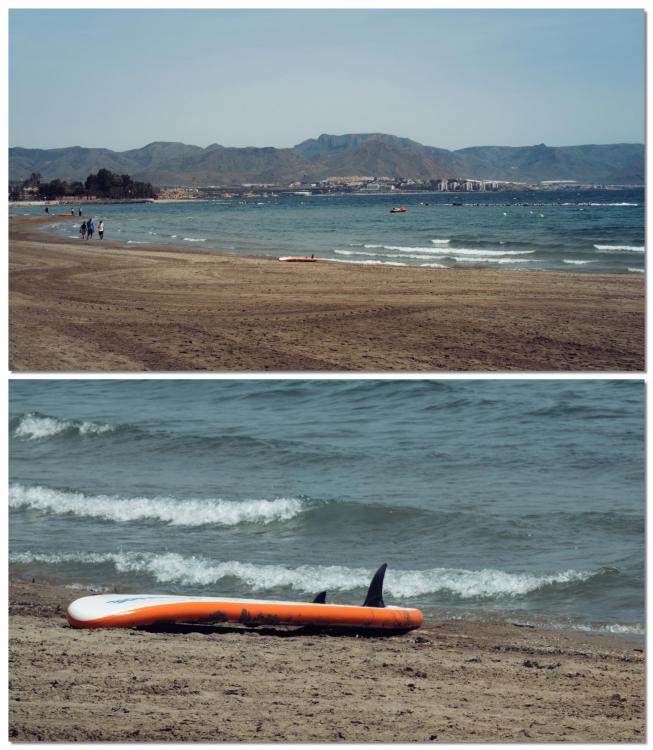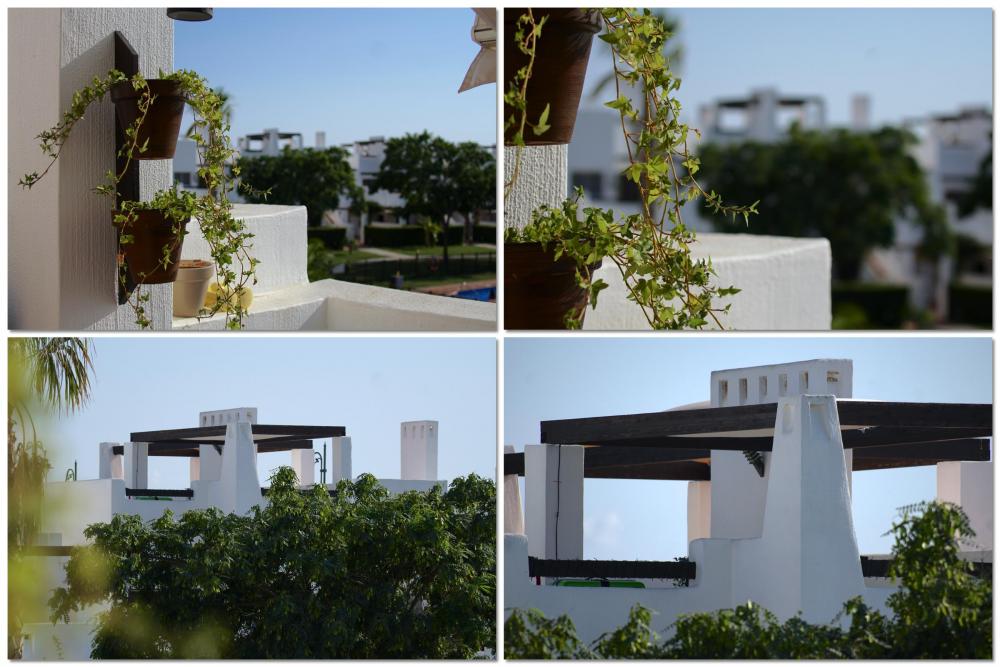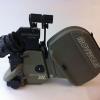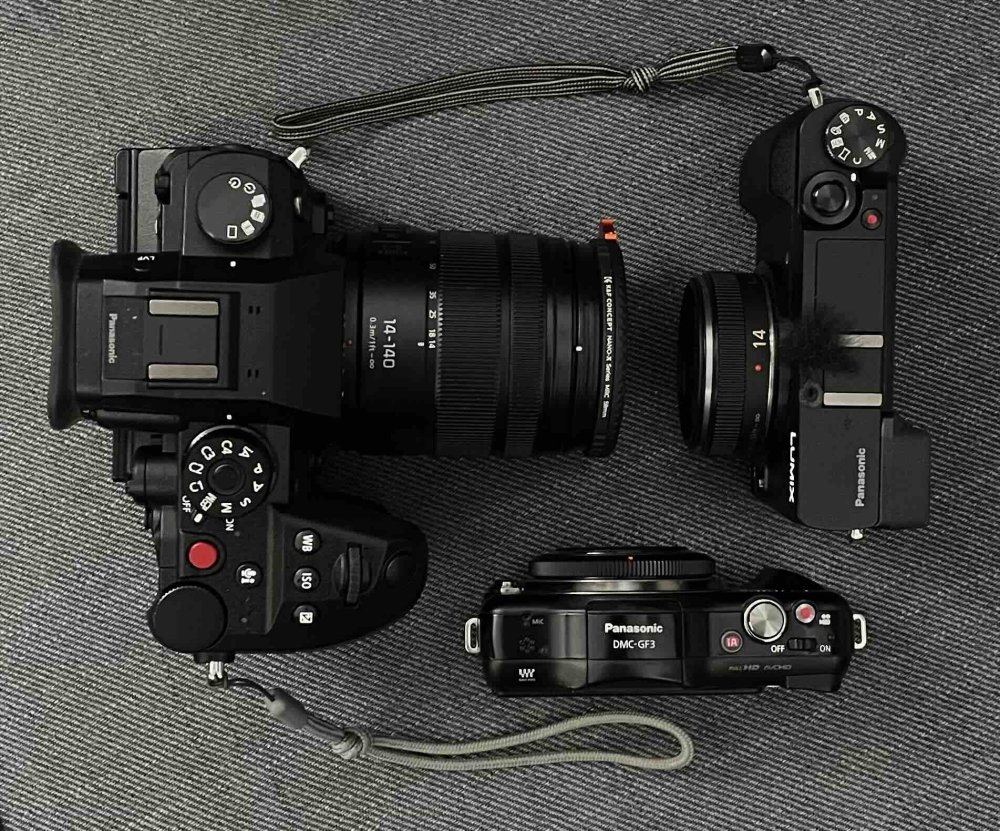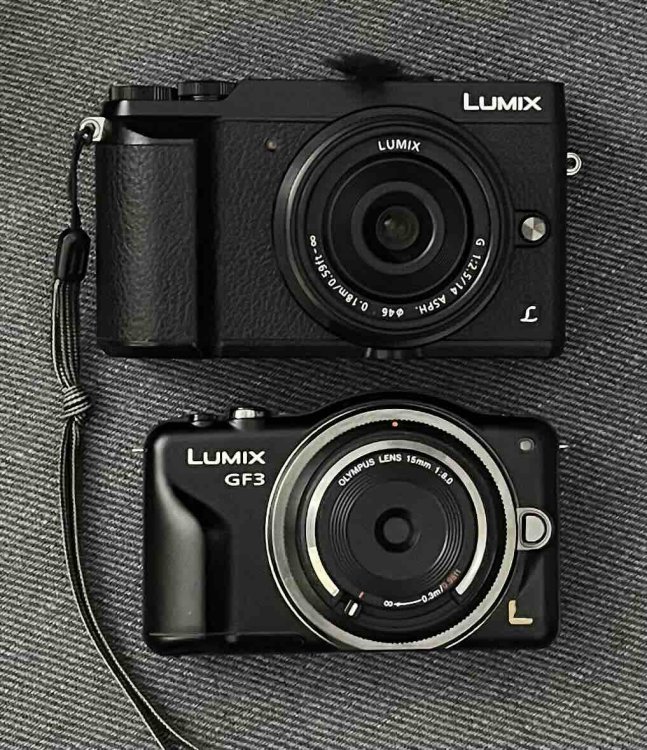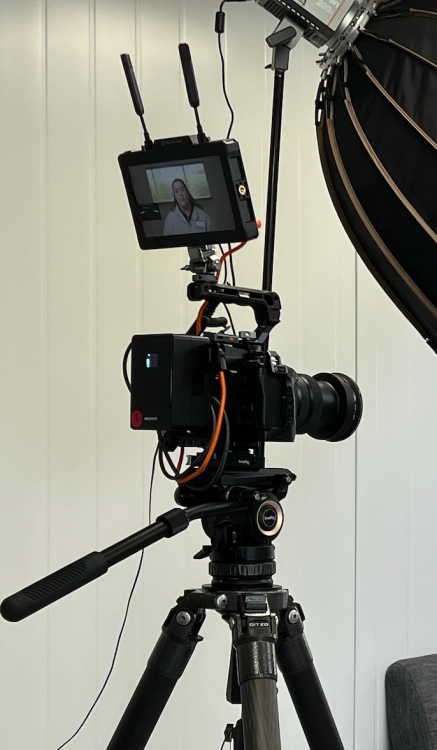Leaderboard
Popular Content
Showing content with the highest reputation since 06/29/2025 in all areas
-

Zeiss ZX1 full frame Android prototype, let's repair
Katrikura and 4 others reacted to Andrew Reid for a topic
According to a book, Dutch company ASML got into a big fight with Nikon a few years back. They both make lithography tools for semiconductors industry. ASML's optics supplier is Zeiss. To pressure Nikon into a settlement, they had to take the patent fight to them in cameras. So ASML got Zeiss to make them a camera. It also doubled as a marketing adventure, shown off in stores but rarely really ever in stock. Until one day this popped up on my radar, with the serial number XXX XXX. The AF wasn't working, or the manual focus (fly by wire), lens stuck at macro 30cm. So I cracked it open, mopping sweat off forehead. Inside is 256GB SSD, final release model was bumped to 512GB. Android 6, with Zeiss test suite of apps onboard including FCC certification test suite 🙂 A music player. A Dutch full frame 36 megapixel sensor with some analogue colour. A Zeiss 35mm F2 lens (but different optics to the Sony RX1), 4K video (Super 35mm crop) and an EVF. And some weird prototype issues. I'll make a YouTube video on it. Sample shot And I still have no idea how I fixed the AF. Just wiggled the lens and sensor ribbon cables a bit and it started working properly, but there was no sign of either cable being loose in the first place! It is quite a fun tool, and a bit different. Android is decently snappy on it, the camera app is well designed, the physical dials are lovely but it doesn't have a joystick or command dials... So a lot is on the touch screen, but it's well done. Shall I root it? Update to 3.0 production firmware? (Risks bricking it). Given the rarity factor... I probably won't!!5 points -

Panasonic Firmware Update For S1II/S1IIE/S1RII Includes ARRI LogC3 Option
ac6000cw and 3 others reacted to Andrew Reid for a topic
Might be time to release my version for free then! The download link will self destruct in 48 hours. Until then... enjoy! https://drive.google.com/file/d/1Z60UNsWHuc6wFmgEOlp0VgDlucHoutip/view?usp=share_link Works on Panasonic S9, S5 II, GH7 as well as all the new cameras. I'd welcome any questions, feedback, help making a guide for regular folk, or even comparisons to the official ARRI LOG profile, or even the odd ALEXA. Sample shots also welcome!! @BTM_Pixhas shot some nice stuff with it already. If you're ok for me to share it? And the ARRI LUT library is available here https://www.arri.com/en/learn-help/learn-help-camera-system/tools/arri-look-library-app Installation is via SD card as a real-time LUT so it sits in-camera, next to V-LOG and the regular picture styles.4 points -
Truth. I had a client from just over 10 years ago come back to me the other day having lost what I provided for them. I went to see if I still had it and expecting it to be a bit trash compared with today, but was actually quite surprised. It stood up very well and the video was shot on GH3 and the photo on X Pro 2. I notice more things like technique and editing & grading choices, but as for the raw result, - the client wouldn't notice any 'upgrades' in a decade.4 points
-
Decision made, I am sticking with LUMIX regardless of what Nikon or Sony do next. S1Rii inbound... Here's my reasoning and intentions for those that are interested in such things! Currently I am using: S9 + 2x S5ii for my video work, plus a Sony A7RV and a Nikon Zf for stills. That's 5 camera bodies plus 9 lenses spread over 3 systems with 3 different menus, batteries, handling/haptics etc. In summary, it works, but not without issues. I am switching to 4 camera bodies plus 7 lenses over 1 system. I have 3 principal aims: A: Reduce the amount of kit I have to work with and B: Have it all within one single cross-compatible system. C. Ability to pull 6k stills from video footage on a consistent basis. Nikon is or was an option with Z8 + 2x Z6iii + Zf and all my Tamron e:Mount lenses would work just fine, but the negatives for me are mainly; no write to second card back up, Vlog is easier/better to grade and looks better to my eye (marginal but looks that way to me) and costs a few thousand more than an all LUMIX line up. Sony has the best lens lineup options for me and I prefer the FX style bodies by a large margin, but no 6k camera (at least for now) kills it for me. Nikon may come out with this rumoured ZR for 2026 and it may answer some of my current Nikon criticisms...but it may not and if it does, c'est la vie, 'sideways' rather than anything I actually need. Ditto Sony. It's the lens lineup mainly that is the draw and if there was a 6k camera available now, I would probably have gone in that direction and in FX style bodies, it would have sealed the deal, but again, even if that comes into being by the end of this year, too late for me and I'm not a brand hopper for the sake of the latest new thing just because it's the latest new thing, ie, this current crop of ex-Sony Shillsters to now LUMIX Shillsters are all going to be hopping back in the direction of Sony within the next 6 months for sure. Nope, I can't and won't do that. If I have a Porsche, I might look at Ferrari or Aston and think, "yep, they're nice, but I already have a Porsche and it's fantastic". (I don't, - I have a used 150,000 miler Skoda Octavia Scout 😜 ) I'm 2 weddings in to a 17 wedding season and the new boy won't arrive in time for the next 2 which I leave for on Monday, but at least the 13 jobs after that will all be with the new system which will now comprise the following: S1Rii with Sigma 28-70mm f2.8 until I have sold all the stuff I need to sell and then will be picking up the Sigma 28-45mm f1.8 for indoor use and use my existing LUMIX 70-200mm f4 for outdoor use. I hate lenses that extend with zooming and neither of these do! Hybrid use, - mainly stills but I will also shoot video with this. S9 with 18/50/85mm f1.8 on freestanding monopod which is my current and going forward will now share duties with the S1Rii as my 'run & gun' units. Pair of S5ii's remain as my 2x statics with any 2 of the above 6 lenses that are not in use on the S1Rii or S9 at any given time, but at some point, I am going to add the Sigma 28-105mm f2.8 into the mix, ie, still 1 less body and 2 less lenses than I have currently been using this year and last, but the 28-105 will give me a bit more flexibility that my current L Mount lens lineup lacks. The only thing that put me off doing this sooner really was the body design... It's not that exciting and I was hoping for something more S1H or even Sony FX style but upon reflection, it's a better body than the S5ii being slightly chunkier, a MUCH better rear LCD and a few knobs and whistles that improve the overall use. Dream camera? Probably not, but a very very solid move (for me) I think. The bottom line is once you have pushed that button, how do you feel about it and will I miss the A7RV and Zf? I feel good about it actually because the positives outweigh any negatives and the Sony + Nikon pairing has been stellar, but there is simply a better (for me) option now. 7.2k 30p Open Gate Vlog here we come...3 points
-
I have this lens and this is a simple range example from one spot that I did with it for someone on here many moons ago. It is actually more like a 70-200 f2.8 size wise for carrying but that is down to it being a push pull design which isn’t exactly great for smooth continuous zoom shots. But is ideal for practising the trombone.3 points
-
The YouTubers are fighting!
John Matthews and 2 others reacted to PannySVHS for a topic
Youtubers are snoring! Better quit watching, cuz it's so boring!3 points -
Nice is doing a lot of heavy lifting there. But if people don't mind log shots of mainly grey buildings under grey skies in Salford then have at it !3 points
-

The Return of Magic Lantern -- New Developer Team
Katrikura and 2 others reacted to Andrew Reid for a topic
How I would love to see uncompressed 14bit Cinema DNG on newer Canon. Perhaps the R7, would be a perfect candidate. Let's hope they focus efforts on supporting the stuff beyond the DSLRs and older EOS M 👍3 points -
prepping a no budget feature. here's some stuff that i like somewhat from the past year and a half or so:3 points
-
The YouTubers are fighting!
FHDcrew and 2 others reacted to newfoundmass for a topic
Yeah, I think we’ve hit a ceiling in a lot of ways. Most of the "progress" over the last couple of years has been in resolution increases, but visually it hasn’t been a major leap. It’s nothing like the jump from SD to HD, or even HD to UHD. And honestly, most of us aren’t even making full use of UHD, since our TVs usually aren’t big enough to show the difference clearly. There have been a lot of quality-of-life improvements when it comes to acquiring images, and things like color science have improved. But visually, you can still take a GH5 and, with some effort, get results that look very close to modern cameras. I can’t say the images I’m getting from my S5 and S5IIX are that much better than what I got from my old GH5. The larger sensor and better color are definite upgrades, but I don’t always take advantage of them. I often shoot at f/4 or higher because I don’t want extremely shallow depth of field. And while the color is nicer out of the box, it mostly just saves time. I was still able to get the look I wanted from the GH5 with a bit more work.3 points -
The elephant in the room is Resolve. As I have discussed and demonstrated in my "New travel film-making setup and pipeline - I feel like the tech has finally come of age" thread, over the last decade Resolve has gotten more feature-rich, but more importantly, it's made it HUGELY easier to use and get good images. People now have a lot more knowledge about colour grading tools and techniques, that's for sure, but things like the Film Look Creator enable you to use a single node, you set your input and output colour spaces, and then you can adjust exposure / WB / saturation / contrast and all sorts of other things in the same tool. You don't even need to apply a film look at all... just select the "Blank Slate" preset, which sets it to have no look at all, and you can still use all the tools to adjust the image without having to worry about colour management at all. Any improvement in your post-processes is a retroactive upgrade to your camera, your lenses, and all the footage you have already shot. Colour grading is such a deep art that I think the average GH5 user back in the day was probably extracting a third of the potential of the images they'd shot, if that, simply because they didn't know how to colour grade properly. I'm not being nostalgic about the GH5 either, the same applies for any camera you can think of. There are reasons to upgrade your camera, for sure, but most of the reasons people use aren't the right reasons, and they'd be better spent taking the several thousand dollars it would take for a camera upgrade and taking unpaid leave from their job and improving their colour grading skills instead.3 points
-

Share our work
kye and one other reacted to fuzzynormal for a topic
Over the past decade I've been a part of thirteen independent micro or no-budget budget films. Five of which I'd actually feel comfortable enough to show to strangers and say, "I've done this." It's weird because I've never been too precious about IQ. My personal-tech-craft-sloppiness-indifference does show in the final product, but only if you're looking real hard (at least I think so). I kind of want to be better, but I also don't really feel a strong pull to eek out that extra little juice, you know? I'm more interested in trying to shape a story by putting a bunch of note cards on the wall in the writer's room. Anyway, I've held tight to my LUMIX cams since the 20-teens. Also have an Oly cam. Haven't bothered to upgrade much. I know I'm missing out on the latest and greatest, but when I look at stuff a decade old vs. the film I just finished, and I think they both look a-okay, I guess I'm just not the type of filmmaker that's eager to change gear. Anyway, if anyone wants to see those five films I mentioned, let me know. I've posted them here before, but can share anew.2 points -
This was introduced last week and offers a raft of new features but the one that seems to be catching everyone's eye is the (paid for) ARRI LogC3 option. https://www.panasonic.com/uk/corporate/news/articles/panasonic-introduces-extensive-new-firmware-updates-for-its-lumix-s-series-cameras-s1rii-s1ii-and-s1iie.html Surprised there hasn't been a discussion about this already on here. I'm guessing that could be that no one has yet bought those camera types or is too busy wondering why they are spending so much effort looking after a cat that isn't their cat but has just turned up and convinced itself that it is now indeed their cat to be discussing camera firmware updates. Or, in my case, both. A bit of a caveat is that it doesn't work in RAW...2 points
-

Panasonic Lumix S1R Mark II coming soon
eatstoomuchjam and one other reacted to MrSMW for a topic
Not especially no, but then maybe that’s because I am a hybrid wedding shooter and not a serious filmmaker? I mean it is/was on the list, but in no way would I switch to a camera purely just because it has marginally better highlight roll off when it isn’t so great in other areas, or completely misses the mark. My criteria as I stated was I am replacing both a 61mp and a 24mp cameras for a 44mp one. For stills which are 50% of my work, absolutely no way would I be considering a 12mp camera as a viable alternative. Does the A7Siii meet my requirements for ‘all in one system’? Sure as does the A7iv, the A7RV and well…any/all A7 and FX bodies, but do any of them meet my requirement to shoot 6k open gate video? Nope, not a single one. As I outlined in my reasoning, I have a minimum set of requirements in order to make any change and one of those was not better highlight roll off. I don’t think you are necessarily being ‘that guy’, but you completely ignored my requirements and instead posed a question based on what I guess would be your main priority. And that’s cool. But regarding highlight roll off specifically, have I considered it? No, not really. I’ve used full-frame Lumix now for 4.5 years and at no time have I considered it an issue and looking at the footage from the S1Rii that I have seen, haven’t noticed anything untoward. I haven’t looked at or even aware of any comparisons in this specific area either. So back to my best Scooby Doo voice, “Idunnoknow” 🤷♂️2 points -
Lenses
kye and one other reacted to eatstoomuchjam for a topic
Speaking of IS, the entire thing culminated in me buying a 24-70 f/4L IS from somebody on ebay - since an irrelevant search result when looking for info on the 28-300 reminded me that it existed - and it's smaller and lighter than the 24-70/2.8L II and has IS. And being an f/4 lens, it's not popular and cost me less than $400 used. If I decide to bring the R5 as a second camera, I'll just put that on it and call it good. The entire combo will be smaller than some of the Fujinon lenses for GF. 😅2 points -

Zeiss ZX1 full frame Android prototype, let's repair
Andrew Reid and one other reacted to BTM_Pix for a topic
Or a full frame 36 megapickshel shensor as its known there.2 points -

The YouTubers are fighting!
John Matthews and one other reacted to kye for a topic
Yes, AI is a real wildcard. I see that there are really three fundamentally different groups when it comes to generative content. The first is professionals who create material for the general public, or various niches of the public. This is where AI will have incredible impacts. The second is professionals who create for their clients directly. This is people like wedding photographers etc, where the client is the audience. This has been debated, but I think that there will still be a market here. If I did something and wanted a record of it, I would want the final images to be of me, not AI generated content that looks like the people I know might have looked during the thing that actually happened. The third is people creating for themselves, where there is no client or money changing hands. This is every amateur, every personal project from professionals, etc. The goal is to have a final result that this person created. Amateur photographers take photos and print and hang the best ones, not because they're the best photos ever taken, but because they were taken themselves. Personally, I'm in the last category and I am completely resigned to the fact that my videos will never be great, will never attract a significant audience, will never be regarded as important, etc, but that's not why I do it so in that sense AI is no threat to me at all. I do understand that people are all in different segments of the industry and have very different perspectives for very good reasons..2 points -

Share our work
eatstoomuchjam and one other reacted to kye for a topic
This is my most recent finished edit. I wrote the music for this too. I've shared it before, but some might not have seen it. Shot on the trip I did to Seoul last August where the wife and I got sick and spent most of our time in the hotel. OG BMMCC + 12-35mm F2.8 + TTartisans 50mm F1.2. Graded in Resolve with heavy use of the Film Look Creator tool. Music written in Logic Pro.2 points -
This looks incredible! Great images and colour, and I really like the music and edit too. It really is a different world down there isn't it...2 points
-

Panasonic Firmware Update For S1II/S1IIE/S1RII Includes ARRI LogC3 Option
eatstoomuchjam and one other reacted to BTM_Pix for a topic
2 points -
Speaking of new cameras... This was shot by a friend of mine on a "vintage" Lumix LX10 in Nauticam housing and different wet diopters.2 points
-
those photogs are veterans with 30+ years experience, all have best nikon, canon, pentax, etc lenses. been there. ml raw on 5d3 can do 10 bit uhd raw. ml raw at 10 bit and above especially at 14 bit, is vert different from typical mirrorless raw or 10 bit preres h.265. been there. 14 bit raw itself is unparalleled even now.2 points
-
2 points
-
The YouTubers are fighting!
andrgl and one other reacted to eatstoomuchjam for a topic
Yeah, exactly. That's what I'm saying. Their banter is still good/fun, but there doesn't seem to be even the slightest spark in the reviews anymore. That's probably also a symptom of PetaPixel demanding a higher volume of reviews and with a number of them being for things that are inherently uninteresting. And I get it - to some extent, how much is there to say about a 21mm lens? And in that review in particular, they didn't even seem to be doing any basic research before the videos - talking about Thypoch coming out with one (the Simera-C has had a 21/1.4 lens for months already, though with a different design) - and 21mm has been a Leica staple for many years with the 21/1.4 Summilux having been released in like 2008 (which makes sense since Thypoch, to some extent, is emulating Leica with the Simera series). But yet, Chris acted like a 21mm lens was something he'd not heard of before... presumably because he just doesn't care about what he's reviewing anymore. It's a job. Lens comes in, take some photos around Calgary, do some LoCa tests, shoot a test chart or two, lens go out. Ready for the next lens to come in... But they've also become a channel that won't publish a negative review at all. I had high hopes for the new person - Sarah? But then she did a review of some shitty wearable camera that seemed way more like an advertisement and any criticism mixed in with tons of praise, despite that the footage looked like pure garbage. Then the next week in the Podcast, they acted like people were crazy for suggesting it, given that some small criticism had been slipped in to a 14 minute mostly positive review where the footage is described as "good enough" and since the gross oversaturated colors are "so vibrant there's not much you have to do to them." To me the footage (the link should go right to the sample clips) could be much better described as "a gross, shaky jello-filled nightmare." Later, in the conclusion, the presenter concludes that the camera is definitely worth the $200 price tag, despite that it's redundant with a smartphone and records with quality much worse than a smartphone. If that shit is sponsored, it's not disclosed and they actively denied it - so that's gross. If it's not sponsored, then PetaPixel's standards on cameras are incredibly different from mine. It was already a thin ice - and posting videos heaping glowing praise on AI slop and deleting critical comments is just the last push that I needed.2 points -
The YouTubers are fighting!
ntblowz and one other reacted to eatstoomuchjam for a topic
Meanwhile, I'm over here starting my own personal beef with PetaPixel. They posted some breathy review of how great it was to make a music video in only one night using Midjourney and I basically said they should stick to photo/video stuff for humans instead of posting about shitty AI slop. The author wrote back saying it was a "complicated" subject. And now they deleted both of my responses to that - the first, OK, maybe because I wasn't very nice. But in the second, I got more polite and pointed out that with current AI models, 5 seconds of video uses as much power as running a microwave for an hour - so his nearly 4 minute video was like running a microwave for nearly 2 straight days - and that's enough electricity to power an average household in the US for about 2 1/2 days, especially since it's unlikely that he used 100% of the clips that he generated, adding to the amount of wasted power. Deleted again. I guess, though, it's a good thing since it was the final straw in pulling their feed from my news reader (only so many clearly-sponsored (but not disclosed) positive reviews of shitty plastic film cameras that I can watch) and unsubscribing from the YouTube which has become an increasingly formulaic slog of Chris and Jordan reviewing products that they clearly don't give a shit about - and the weekly podcast where they act like smug celebrities, even though 99.9999% of people neither care who they are nor care about anything they've said. Good encouragement also to fill out my YouTube subscriptions with some smaller creators who actually seem interested in what they do.2 points -
From what I've seen and comparing to my own 10bit footage, Magic Lantern Raw on Eos M and 5DII/ III looks magical under natural light despite less dynamic range and much less resolution. So I am exited about any news from ML. I am referring to the pure joy for the image. It is not an observation in regards to full time content production. No, no, no! @eatstoomuchjam No 10bit GM5 flimsyness but a solid and small 10bit GX85 body. Thank you, Panasonic!:) GM5 feels hollow and viewfinder is very tiny. Sorry, but no! 10bit GX, yes please.:) @stephenDoesn't the 5DIII allow liveview on the screen, just like the EOS M?2 points
-
The YouTubers are fighting!
FHDcrew reacted to newfoundmass for a topic
I've seen some incredible looking C100 footage, and I think that it still can produce great images today. I bet if you upscaled it and uploaded it to YouTube most people wouldn't notice it wasn't really 4K.1 point -
Frame Grab Software
MrSMW reacted to newfoundmass for a topic
I usually just use quicktime and use command c. Never looked into software that could do it automatically!1 point -
The YouTubers are fighting!
FHDcrew reacted to Clark Nikolai for a topic
Recently I showed something I did some years ago, shot on HDV with a Canon HV20. Some people were impressed that way back then I had such good equipment then shocked when I told them it was on a consumer HDV camera. (I did have a wide angle attachment and shot it in a log type mode then colour corrected it.) Cameras have been more than good enough for a long time.1 point -
Lenses
kye reacted to eatstoomuchjam for a topic
It has been on my "someday maybe I'll buy that lens" list for about 20 years now. Every year, the price comes down a bit more. Prices in the US are now about $500-600 and ebay prices from Japan are about $450. What's the inflection point where it goes from "maybe someday" to "buy?" Only time will tell. It was also superseded by a 28-300/3.5-5.6L which is a more useful range. Still a push-pull zoom along with the rude comments from friends that comes with that when using it. Used prices in the US are still high - $800+. Although... there is one on ebay for $400 which intermittently throws a communication error connected to the camera. Kind of tempted to take a flyer on that one and do the rubber eraser trick on the contacts - and if that doesn't work, disassemble the rear of the lens to see if it's a solvable problem... Exactly. It's important, when traveling, not to be too focused on a single specific outcome. In the end, it's about the adventure and the time spent together (the woman I'm dating lives in Brasil so we need to treasure our shared time, at least I can spend a few months there yearly because my job tolerates me working from there for a while). Renting a truck with a camper on it, there's always a danger that it breaks down and we miss some stuff due to lost time waiting for repair/replacement. By going with a vague itinerary, it's easier to focus on what we're actually doing vs fretting about things that will be missed (and if they are missed, just about all of them are guaranteed to be there if I ever choose to go back again). It's a strange world. 😅 Both of our countries feature landscapes from harsh desert to tropical jungle. Yours has a lot more aggressively dangerous flora/fauna, though. In mine, the danger is mostly from the residents of rural areas. In both places, there are spots to stand, breathe, and feel in awe of the amazing landscape sprawled out before you. (Even here in Minnesota, we have some places like that despite that it's objectively one of the most boring/flat states in the country)1 point -

Panasonic Firmware Update For S1II/S1IIE/S1RII Includes ARRI LogC3 Option
John Matthews reacted to MrSMW for a topic
OK, I have taken a look at the Arri option and not interested. In side by side comparisons with Vlog, sometimes I preferred one and sometimes the other, but Vlog more times than the Arri. And because I don’t need to match an actual Arri camera, zero need. And definitely not paying for it! More interested in the firmware update… So the S1Rii can now shoot open gate 8k, but it’s limited to 24p, ie, no PAL region 25p? That’s fucking weird! But that aside, I am considering my next move… I am looking for: 6k 50/60p, full frame, for screen grabs. S1Rii offers 5.9k 16:9 S1ii offers 5.1k 3:2 For vertical cropping purposes, there’s nothing in that really because although the S1Rii 16:9 is ‘less tall’, it’s got a bit of extra resolution/detail that makes up for supposedly more latitude 3:2 open gate? Anyway, I think that is a real world draw. General consensus seems to be that the S1Rii has a slightly better image and slightly better low light, so all factors considered for my needs, that’s an S1Rii win. Sony do not appear to have anything sub FX6 that can compete here? But correct me if I am wrong… Nikon has entered the chat… The Z8 then, it seems to be all or nothing to me from the specs as in yep, you can have 8k 60p, but it’s raw only, ie, mahoosive file sizes. Is there not an Nlog option for this? From the spec sheet, it appears 4k is the limit for 50/60p if I didn’t want to shoot raw? Or have I got that wrong also? Only interested in Lumix, Sony or Nikon for all kinds of reasons so if you even mention Canon or Black Magic, I will ghost you.1 point -
1 point
-

Zeiss ZX1 full frame Android prototype, let's repair
PannySVHS reacted to Andrew Reid for a topic
1 point -

Zeiss ZX1 full frame Android prototype, let's repair
FHDcrew reacted to Andrew Reid for a topic
Does Android 6 have Camera API 2.0? I'll try it out1 point -
Ah, the old 'Irish Screwdriver' technique. Always works. Except when it doesn't. I liked the concept of this camera, but never dared...1 point
-
Imagine if MotionCam RAW worked on this…1 point
-
Lenses
kye reacted to eatstoomuchjam for a topic
It's true - though if they made that lens and it had decent quality, I might be one of the only people who would be excited to get it as soon as it hit the second-hand market. It's true - when on set, I'm usually shooting my t/1.2-t/2 lenses at closer to t/2.8-4, partly because getting the subject in focus is better than having a razor-thin focus plane. I tend to like to deliver in 4k, but yes, post-cropping flexibility is the main reason that I usually capture in 6k or 8k for narrative. I also like wider aspect ratios (even in film, where I like 6x17, 4x10, and 8x20 the most) so even shooting 4k gives some room to reframe up or down a little bit. I used to have the EF 24-105/4 and I never liked it much, but I have the 24-70/2.8 and it's fantastic. It could certainly be an option. I've also, at various points in my life, considered the Canon 35-350/3.5-5.6L - still a fairly large lens, but it's a 10x zoom for FF that manages quality a bit nicer than a coke bottle. It's pretty affordable used these days. But I'm more likely to try to stick with things I already have. Guided safaris are extremely expensive from what I've seen. It's potentially good advice, but I prefer that we go our own way. There's always the possibility of seeing one of the guided tour buses rolling around and following it for a bit too. Plus, if I gave somebody $1,000-2,000/day to show us the animals, I'd probably mentally feel a bit entitled when seeing them. If we go on our own and I see a single giraffe head snacking on a tree, I'll be beside myself with excitement. Plus we can research before arriving to see if there are sites listing the most likely places. I also am focusing on the time in Etosha, but it's also going to be 2-3 days of a 2-week trip. I'm also really excited to see some of the shipwrecks along the skeleton coast, the dune-filled houses of Kolmanskop, the huge sand dune fields of Sossusvlei, and to take my own version of the iconic field of dead trees in front of an orange dune at Deadvlei... (among other things)... and from what I've read, random wildlife encounters (zebras, etc) are pretty likely when driving around a lot of the countryside.1 point -
**Haven't been active a while but have been lurking often, just not posting. Hoping to get back to posting much much more regularly now and actually being involved in this awesome community. Hope everyone is doing great and making awesome art that plays in sequences of frames 😉 "_names_are_hard" from the magic lantern forum made a post yesterday announcing a new official development team; I am not 100% sure but seems as though this was not the case sine a1ex left a few years ago. Obviously, awesome developments have still occurred in the mean time, such as the incredible work done to the EOS M, 5d Mark iii and more to sd overclock, implement new binning modes that provide more image detail and less moire, and enable excellent previews in modes that previously rendered almost unusable to monitor. Now an official development team is back, and their aim, according to the post, is to implement features into main builds; finally we do not need to dig through forum posts anymore lol... What is even more exciting is the announcement of great improvements towards Digic 6 and Digic 7 cameras. The Canon 200d/SL2 has an OFFICIAL build with WORKING RAW VIDEO. This excites me, as supposedly this camera has an entire stop better dynamic range at ISO 200 than the 5d mark iii does...and DPAF to boot. Makes me want to get one just to play around with and rig into a poor man's interview b-cam for my Nikon Z6. The 7d mark ii, 6d mark ii and 750d/t6i also have official builds, though more work needs to be done to implement RAW video. Still, even this is exciting news, because it looks like a point will be reached in which the aforementioned cameras all have stable RAW video. Man...the 6d Mark II is gonna become absolutely killer and I believe might overtake the legendary 5d mark iii as the ML king...why? Full-frame AND Dual Pixel Autofocus. So exciting. Imagine if they progress on the EOS R and we get RAW video on that...we shall see. Anyways, wanted to share as I think it is exciting that the ML community is getting active again. Although I have never personally owned a ML camera, it has always fascinated me and I want to pick up a ML-compatible Canon body, even if it's the dirt-cheap Canon 50d that makes it possible to shoot continuous 14-bit RAW video for only $86 US on ebay haha. Exciting times. Screw modern camera releases. My 7 year old Nikon Z6 is still alive and kicking. And these old cameras are about to become beasts. And to me 5d mark ii/5d mark iii/eos m crop mood stuff looks just as good as your youtube shill Sony FX2 bs anyways lol... https://www.magiclantern.fm/forum/index.php?topic=27315.0 Also here's the dirt cheap Canon 50d...I might buy one. Literally the cheapest half decent ML RAW cam in existence: https://www.ebay.com/itm/326652260011?_skw=canon+50d&epid=100134403&itmmeta=01JYD74BEKB8BK43GTP64YXEYE&hash=item4c0dfdeeab:g:zH4AAeSwaqVoO8fg&itmprp=enc%3AAQAKAAAA4FkggFvd1GGDu0w3yXCmi1dPuUUXNiquWqTtYdpH3VhCftZqA2312R5f5VSKqv6B737uadt8L7po3UhjQmLj7p22fLaKrov1%2FdF7%2FPis094b98Wz%2FnMbwS7WtRhqTqfyUhYZCMMmhc9OdIad%2FLodvcJXSllJYh90xsUWRTm7vGW5QqKQBbevi0jxouClCZ%2Fbk6QKRNa9LTJsvkdX56eaU7F7IwVfBdZCHZOygCtMLm6H3MlF0YovoZEHjhhYqNq10jPFnlPCjhOBrGydgfrK%2BKuCTwN1sGX5Pb3KDZ5MpxcA|tkp%3ABk9SR7i3kafzZQ1 point
-
Equivalency of DOF is the elephant in the room for sure. In comparison, MFT lacks in the selection of gargantuan lenses with super-shallow DOF and FF lacks in small lenses without shallow DOF. If someone made a FF 28-280mm F7.0-11 lens then it should be the same size as my 14-140mm F3.5-5.6 lens, but of course the internet would go ballistic over it and run whatever manufacturer dared to create such an abomination out of town faster than you can say "grab your pitchforks - the devil has come for our children!". It depends on what you're doing of course, but for me personally when I switched from watching YT lens reviews to watching award winning movies and TV shows from the worlds leading professionals I had the Ah-ha moment when I realised very few shots had shallower DOF than could be achieved with relatively normal MFT lenses. Even when looking at the shots that would have required quite fast lenses on MFT, the aesthetic penalty for the DOF being deeper was very low. I then looked at what potential benefits would be traded-away for it.... lighter cameras that make me more likely to carry them around and use them and therefore get more shots to use in the edit... smaller equipment making me more pleasant to be around and having a nicer trip and causing the people around me to be happier and more relaxed and look nicer in frame... the smaller rig making the people around me less distracted and suspicious... the deeper DOF meaning there was less chance of having one person in focus but the others out of focus or it simply missing focus by focusing on the wrong thing... the much lower likelihood of having a difficult conversation with law enforcement or self-important security staff, etc. I concluded that getting slightly shallower DOF was a very small benefit competing against a significant number of advantages that would make far more impact to the end product and to my experience in using it. The extra cropping potential is one of the only benefits I can see for sensors above 2.5K. I put the cropping modes on my GH5 and GX85 into good use when I was shooting on primes and have been hugely impressed with them with my GH7 + 9mm F1.7 PanaLeica which I'll use for shooting in ultra-low-light. The R5 + EF-RF + 40mm F2.8 would be a great medium size setup. Perhaps the best second camera FF setup I could think of would be your R5 + 24-105mm F4. Like I mentioned above, the flexibility and speed of using a zoom when shooting in uncontrolled conditions just gives you more coverage - there's a reason doco and ENG shooters use zooms! Yeah, that's a real gem, I'm still seeing footage crop up on YT that really shows how much you can push things. I've also noticed it's very popular with the vlogging crowd and it seems to give really good results, similar to those who might use a small mirrorless, which is definitely saying something when you consider the size of it. Nah. Do a complete end-to-end analysis of what gives you the best results in the final edit or final photos, work out what equipment aligns best with those trade-offs, buy it, test it and learn the settings, then shift focus to actually shooting and don't look back. Beauty magazines make you feel ugly, and camera YT makes you regret your equipment. Best strategy is to ignore both. By far the most important skill in uncontrolled environments is being able to understand and predict the behaviour of your subjects. Not only does this matter for shooting people in public, but it matters doubly (triply?) for safari because the biggest struggle seems to be even finding the animals in the first place. A professional animal tracker would probably get better footage with an iPhone than an amateur with all the equipment in the world who spent a week and only saw a few animals the whole time. Perhaps a good exercise is to think about what the total cost will be of the trip, think about how much it would matter if you didn't see any animals at all, and then see how much it would cost to hire a guide or some other service that would help you locate things. There's a reason that people hire a model instead of just walking the streets hoping to find someone to shoot!1 point
-
Yes, it's the AF that makes me think of manual lenses on the GF3. For stills it's a fully featured camera, but for video it's auto-everything* and so having an AF lens on it is a pain because the CDAF will hunt occasionally. (* actually I recorded some clips with it last night and discovered it keeps the current WB setting - how odd that's the only thing it will let you lock down!) If you don't already own the Olympus body cap lens then perhaps the "7Artisans 18mm f/6.3 Mark II" might be a better choice as it's cheaper and faster than the Olympus.1 point
-
Indeed! Actually, the killer combo for the GF3, if we think of it like a tiny vintage film camera, is when it's paired with the Olympus 15mm F8 body cap lens. It is truly tiny.... In a sense it's an incredibly synergistic pairing, because it gives a 30mm FOV, which is wide enough to make any micro-jitters pretty minimal (especially if you add gate weave in post) and it's sharp, so the softness is just limited by the GF3, and it's deep DOF which fits with the 8mm look. Without an ND you're also using the shutter to expose, which I understand is also how 8mm cameras worked? However, perhaps the killer aspect of it is the way you would use it. You'd never use this as your main setup, so this would be a carry-everywhere low-stakes camera for having fun with. It would be what you pull out when being silly with friends, or filming random things that aren't so formal. In a way, that's how people might have used an 8mm camera back in the day, because they weren't inundated with video and didn't have the media savvy we all have now, so they would have just pointed their home movie cameras at whatever was happening. It's even got a lever that closes it for use in pockets, but it also works as a manual focus adjustment and close focus is something like 30cm / 12 inches which might even get a little bit of background blur (I can't recall) so it's quite versatile. The challenge is that the F8 aperture means it's basically no good after sunset or indoors, so that's the weakness. Apart from that, this is perhaps the most likely setup I would use this with. There's an F5.6 version from a different manufacturer that is tempting, but re-buying it for only one extra stop is a bit hard to swallow. Anyway, here's a video I shot with this combo quite some time ago.... I can't remember how I graded that, but I think I used a film emulation plugin that added a lot of softening in post, so don't take that as the limits of its resolving power. It also shows a lot of rolling shutter, so maybe the strategy would be to have it on a strap around your neck and pull that tight when shooting to stabilise the camera a little. There is something about the extreme lack of technical performance that makes my brain think "well, this isn't going to win awards for literally anything, so ignore all the rules and just shoot and have fun!"1 point
-
The YouTubers are fighting!
John Matthews reacted to newfoundmass for a topic
Virtually any camera released in the last 10 years, if used with care and consideration, will look good. And ten years from now the GH5 will still be able to generate lovely images, assuming there are some still out there that work! The pace in which people upgrade cameras is crazy to me, it just seems pointless and wasteful. --- I forgot to add, the Craterr video information makes me think that it might be related to several "creators" switching to Lumix recently. Armando and Cam are two of them who've switched and become VERY PRO Lumix, so it certainly makes me go "hmm." As much as I love Lumix and believe they are absolute powerhouses, it was and is very suspicious how many people were suddenly making the switch.1 point -
The YouTubers are fighting!
John Matthews reacted to FHDcrew for a topic
Yeppp. I love Justin Philip BTW. But yeah these youtubers deserve it lol. The YT camera community is so toxic.1 point -
GX line supports its elegent GM silbings, so both to be continued in 10bit alterations of their predecessors.:) @eatstoomuchjam1 point
-
Always great to hear the ML community is still pushing along. I cut my teeth on the 5D MKII ML and still have two 5D MKIIIs with ML that I refuse to sell! All that said, the R50V is $650 brand new and once those hit the used market they'll be $500 and under vs the 5D MKIII which is still going for roughly the same price. So nostalgia aside, the R50V's price, specs - not to mention form factor and access to RF and EF lenses - really makes it hard to argue that anything ML related is the prudent way to go in 2025, imo.1 point
-
I'm running the camera and 7" Hollyland monitor off one V-mount, recording internally to a Lexar 512 silver CFexpress card. The camera battery is in the grip but fully charged. Camera is powered via usb-c and we are indoors so far about 20-21 C. The clips/takes are about 30 - 45 minutes each per interview. I *THINK* the overheating would be at extreme use, ( I have never had to shoot anything at 6k 60p or 120p in Pro Res HQ for 2 hours + in one take.....) but no issue so far with anything that I think is "normal" use!1 point

